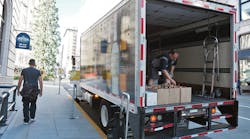According to the Census Bureau of the Department of Commerce, U.S. retail e-commerce sales for the first quarter of 2019 were at a seasonally adjusted $137.7 billion. This is up 3.6% from the fourth quarter of 2018. In fact, e-commerce now accounts for 10.20% of all U.S. retail sales, which represents a long-term annualized growth rate of 15.33%. This growth trajectory is expected to continue, with no real end in sight.
Most of us love the near-instant gratification of ordering something online one day and having it show up at our home or office the next. Some people are even pushing for same-day delivery and while they are willing to pay something for that “privilege,” they aren't willing to pay too much for it.
And while getting what we want delivered almost immediately is nice, it is not without its costs. For one thing, if goods are going to be delivered the same day they are ordered, those goods need to be closer to the end customer. That means more warehouses. The vacancy rate at warehouse properties is near a record low, according to Legg Mason. And construction of new warehouses is booming, especially near large cities.
Then there is the need to transport those goods from the warehouse to the end-user which will lead to the need for more vehicles moving “air in boxes” — in other words the less dense packages that tend to make up the bulk of e-commerce deliveries.
Since many of these deliveries will be made in urban areas, the trucks making those e-commerce deliveries will likely cause increased congestion and more traffic in residential areas.
There is also the whole return goods piece of e-commerce to consider as well. Unlike in-store purchases, which have a return rate of about 8%, purchases made via e-commerce are being returned at a rate close to 30% making mastering reverse logistics a necessity for retailers. Most of these returned goods end up back in the same warehouses from where they were shipped. According to CBRE, returned goods from e-commerce purchases are taking up 7,000 million square feet of space nationally.
I am not sharing these statistics to make you think e-commerce is a bad thing or to suggest we find a way to halt its growth. But I do think we need to figure out the steps we need to take to improve the efficiency of the last-mile deliveries that are part and parcel of e-commerce. I don't see any reason why the commercial vehicles involved in the e-commerce supply chain can’t focus on fuel efficiency and still get us what we ordered within hours of us hitting the button to place the order.
Maybe we will be able to take some of the reasons we will learn from Run on Less Regional and apply them to last-mile.



